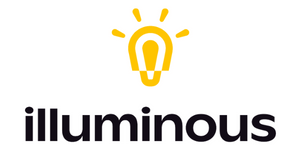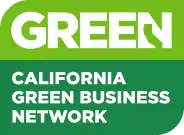
Often when I am speaking to a client, or even just another human being for that matter, I get carried away in my use of SEO and digital marketing jargon. “We will start by focusing on your long tail terms because you have a better chance of appearing in the SERPs faster,” is something I have likely said to you if you are a client. (This is somewhat ironic because when PPC was first introduced, I thought that a client was saying, “…paper clip…” when in fact he was saying, “…Pay Per Click…,” but I digress.)
In an effort to remind myself that other humans don’t use “SERPs” as an actual word in a sentence, I thought I would write up a glossary of terms as a guide. There won’t be a test at the end of this post, so don’t worry, but it is possible that I could shed some light on a term that you’ve seen/heard used but had no idea what it meant.
There are so many acronyms in Internet marketing that occasionally you might slip into some secret military code on accident. It’s as good a place as any to start.
Acronyms You Need to Know
SEO – Search Engine Optimization OR Search Engine Optimizer – This is either the act of making digital properties, such as websites or profiles, optimal so that search engines can properly index them, or it is the person who is doing the optimizing. 9 times out of 10, it is the former.
PPC – Pay Per Click – This refers to online advertising in which the advertiser pays each time a user clicks on their advertisement. (It has nothing to do with paper clips, FYI)
CPC – Cost Per Click – This is directly related to PPC in that it is the fee the advertiser pays each time a user clicks on their ad. The fee is dependent on a variety of factors depending on the type of ad and the platform on which the ad is hosted.
SERPs – Search Engine Result Pages – This refers to the list of results you see when you type a query into a Search Engine such as Google or Bing. You want your business to appear in the SERPs for searches users type in to find your product or service.
CTR – Click Through Rate – This is defined as the number of clicks your listing receives through to your web property, divided by the number of impressions or views that property had online. It is usually expressed as a percentage. For instance, if I received 5 clicks on a Google listing for this blog post but 100 people saw the post, my CTR is 5%. Formula – (Clicks/Impressions) x 100 = %
ROI – Return On Investment – This is a term every business owner should know. Your return on investment is how much money you are bringing in as a result of your spending. In this context, the amount you are spending on your marketing efforts. The formula for discovering your ROI: (Net profit/Investment) x 100 = %
CPL – Cost Per Lead – The amount of money you spend to acquire a lead for your business. Because not every lead becomes a client, you want to compare this to your CPA.
CPA – Cost Per Acquisition – The amount of money you spend to acquire a client for your business. The formula for this is Cost/Number of Acquisitions. This is important so that you know if you are making money from your marketing channels, breaking even, or (the worst) losing money.
SEM – Search Engine Marketing – This term is ambiguous because it is used interchangeably with several other terms we have covered. It can refer to your overall online marketing strategy or it can refer to only your paid advertising efforts online (PPC). If you see this one in the wild, it is best to use context to place the meaning.
Pay Special Attention to These Terms in 2014
Content Marketing – The act of leveraging articles, ebooks, infographics, videos, blog posts, games, contests, and other types of content to gain brand recognition and increase authority for the purpose of generating qualified leads.
Attribution Models – I could write a series of blog posts on this term and the various models associated with it. Wikipedia defines Attribution as …”the process of identifying a set of user actions that contribute in some manner to a desired outcome, and then assigning a value to each of these events.” (Source) In layman’s terms, you can look at either the last thing a user did before they made a purchase and attribute all of your ROI to that channel, or you can look at the series of steps they took over multiple platforms and attribute fractions of your ROI.
The important take away about Attribution Models is that just because a user’s last interaction with your business was to Request a Quote on your website, does not mean that the user has not interacted with many of your other marketing channels in the past.
Authorship – Placing a by line in all of your articles, blog posts, or other pages authored by you in order to establish your authority on a topic related to your business. You can clearly see authorship in the SERPs whenever you see a person’s picture and by line.
Words to be Wary of in 2014
Link Building – The process of building links online in order to increase your placement among the SERPs.
Acquiring back links to your website is still a very important component to any internet marketing strategy, however, the rules have changed significantly with Google’s recent updates Panda and Hummingbird. If someone is trying to sell you on their link building services, ask them how their strategies have changed since these updates. If they don’t know what you’re referring to, run in the opposite direction.
Rankings – (GASP!) Yes, this is a term to be wary of in 2014. Rankings typically refer to the placement of your business listing within the SERPs for a particular keyword term.
The reason for caution is that no one can guarantee you a #1 ranking for any keyword term or topic within a Search Engine, and if they advertise that they do make that guarantee, they are untrustworthy.
There are a number of SEO related words that weren’t included in today’s post. What are some that you have been wondering about? Let me know in the comment box and I will be happy to answer them for you.







